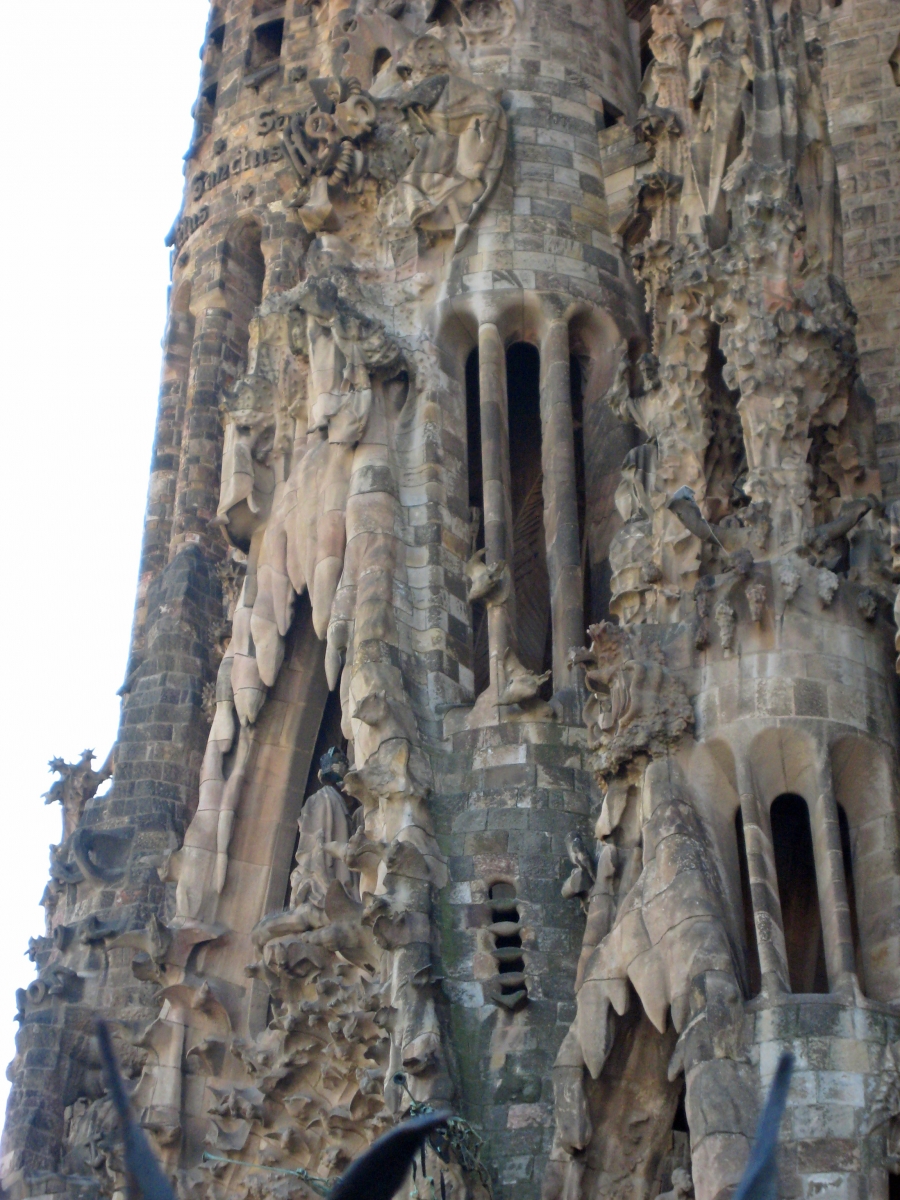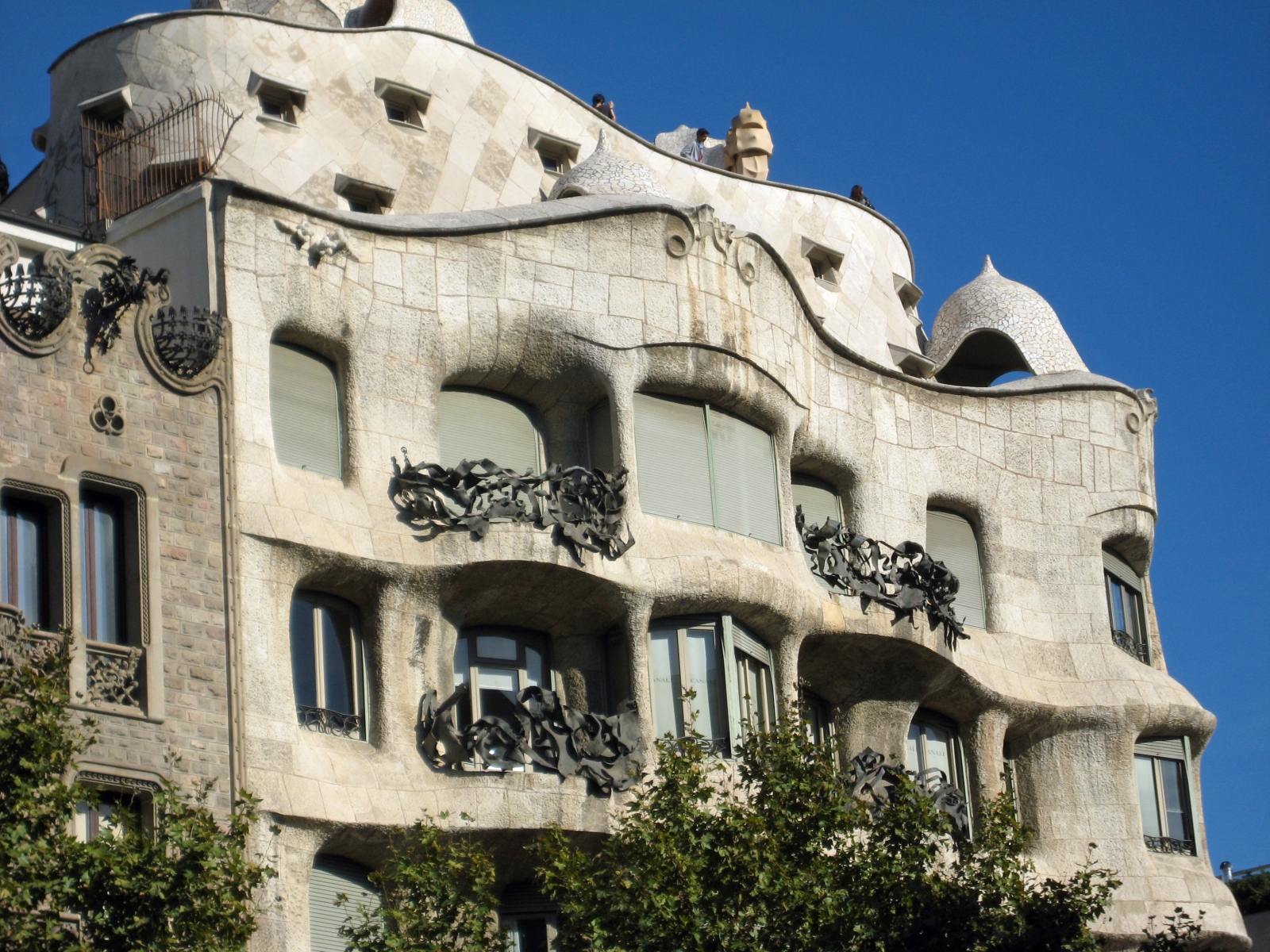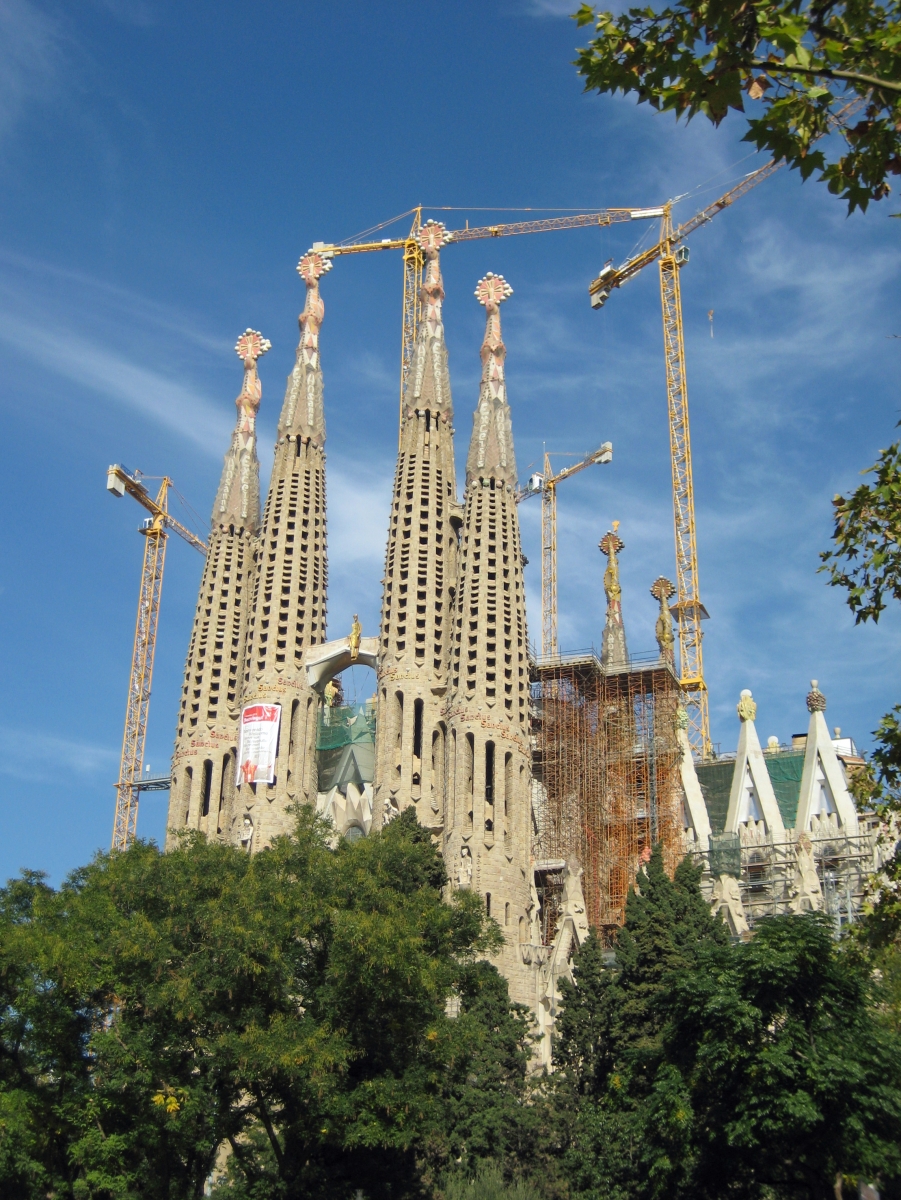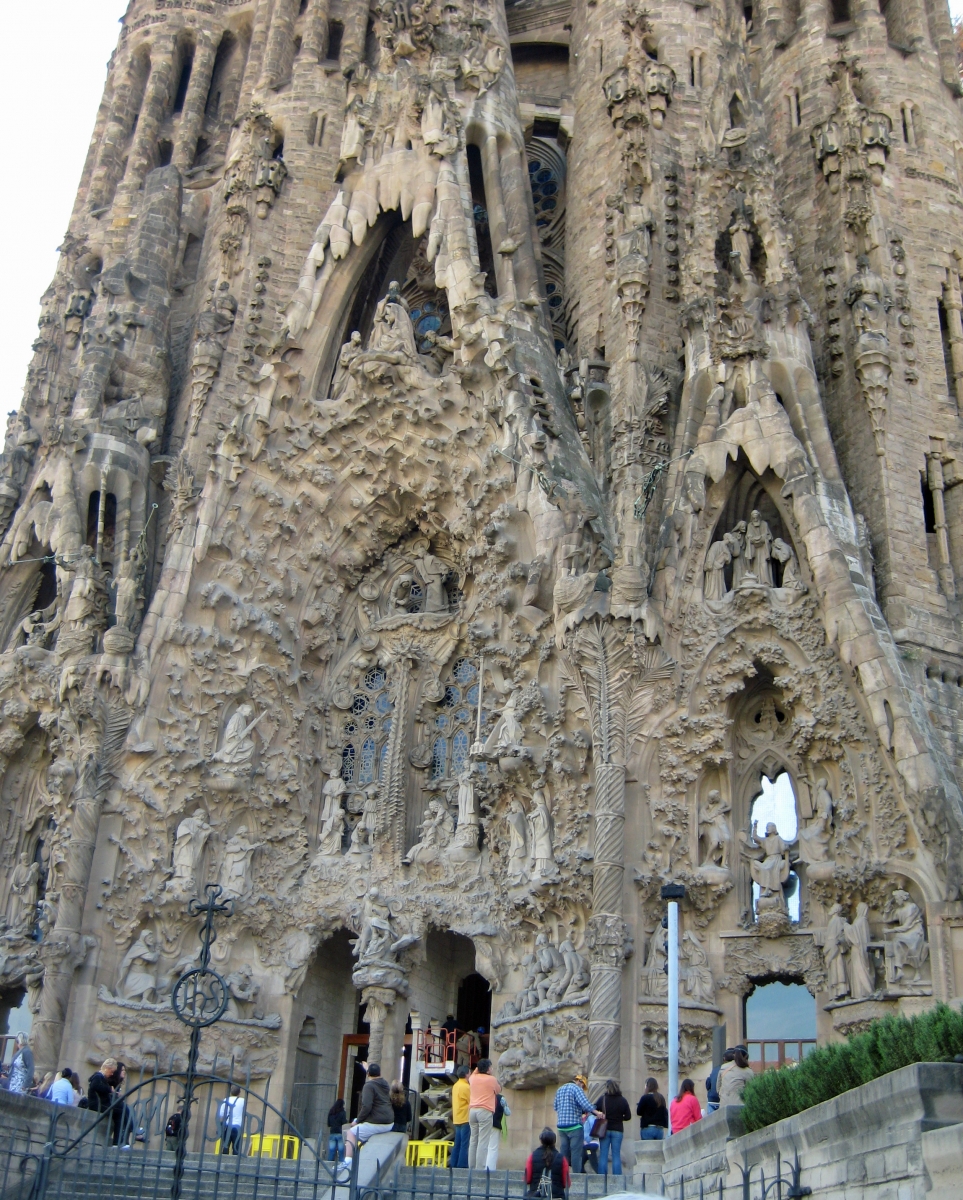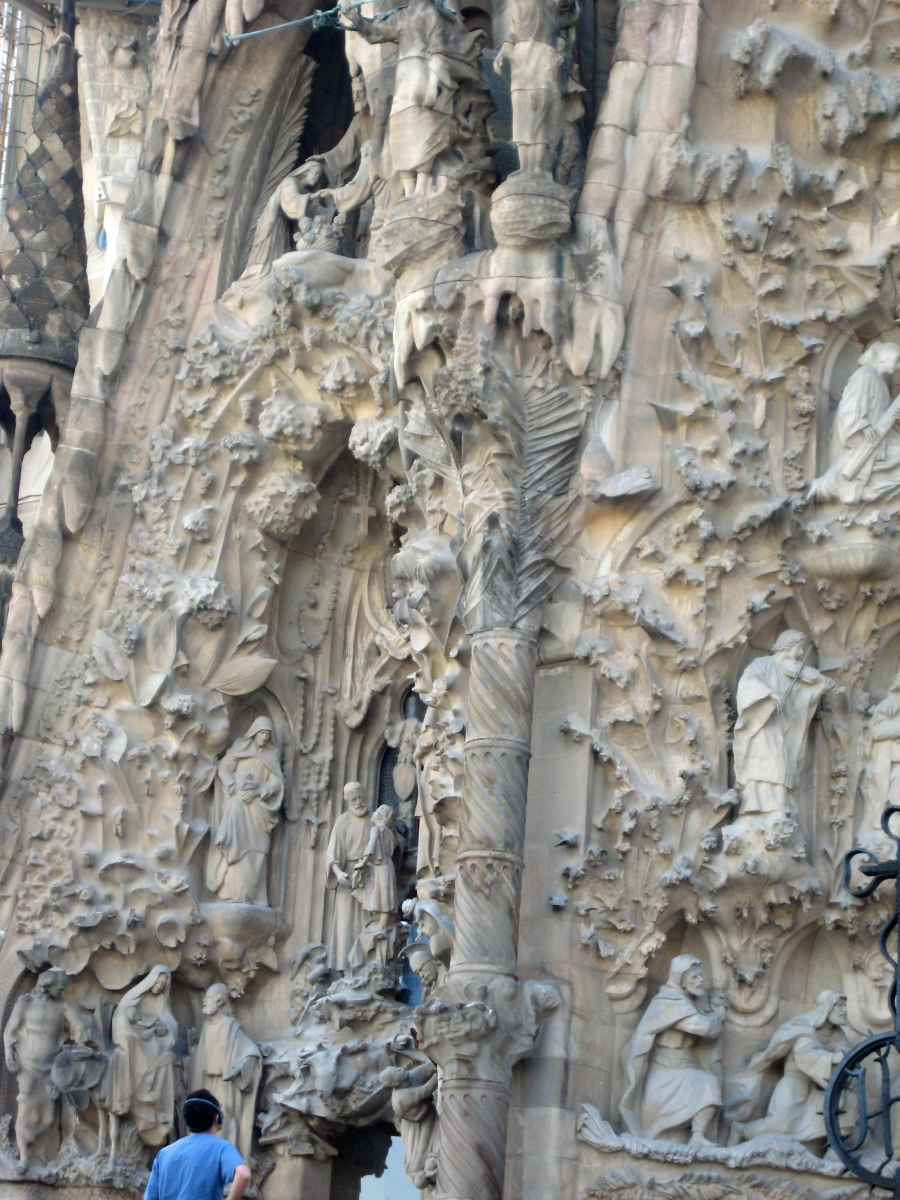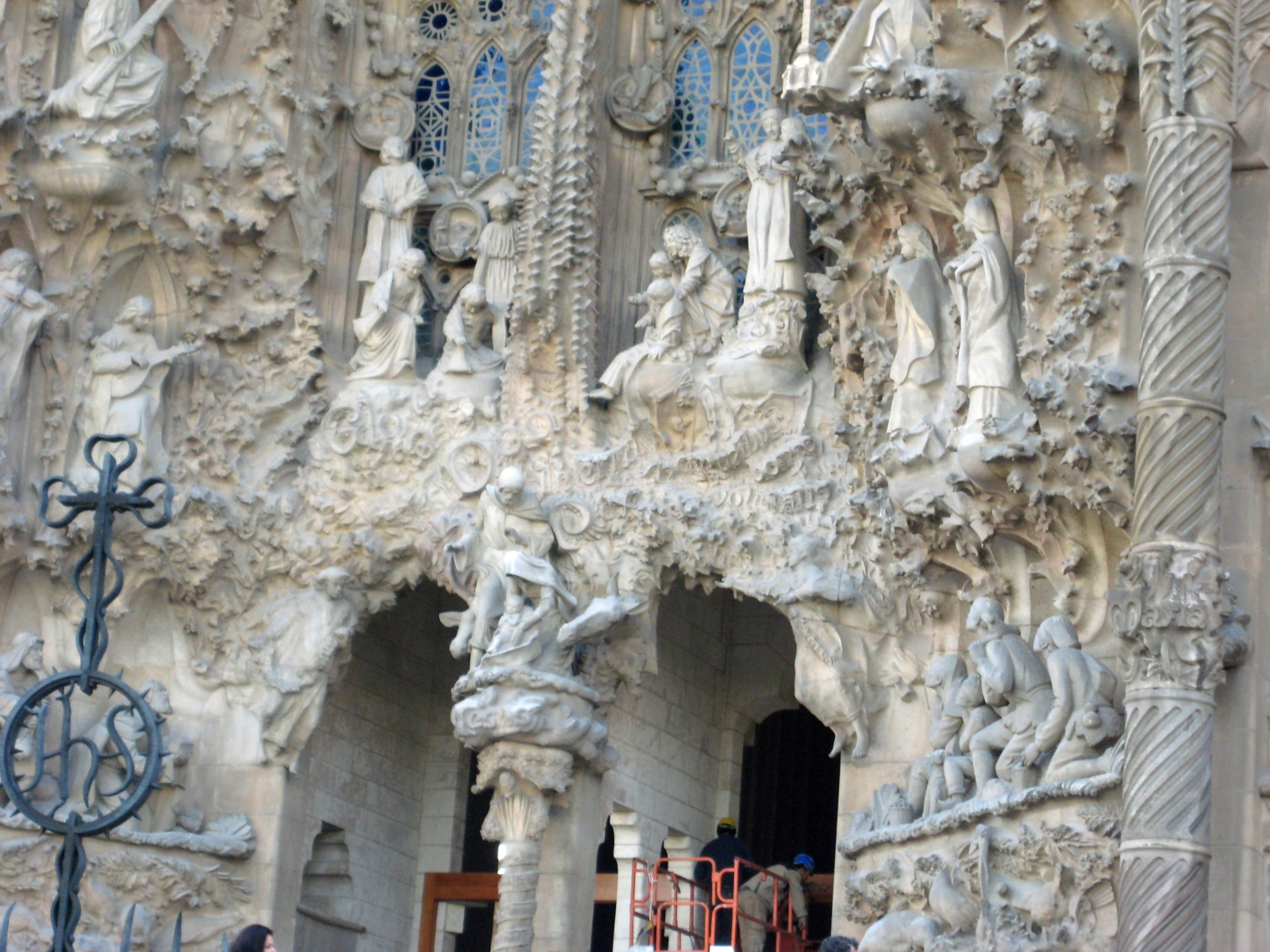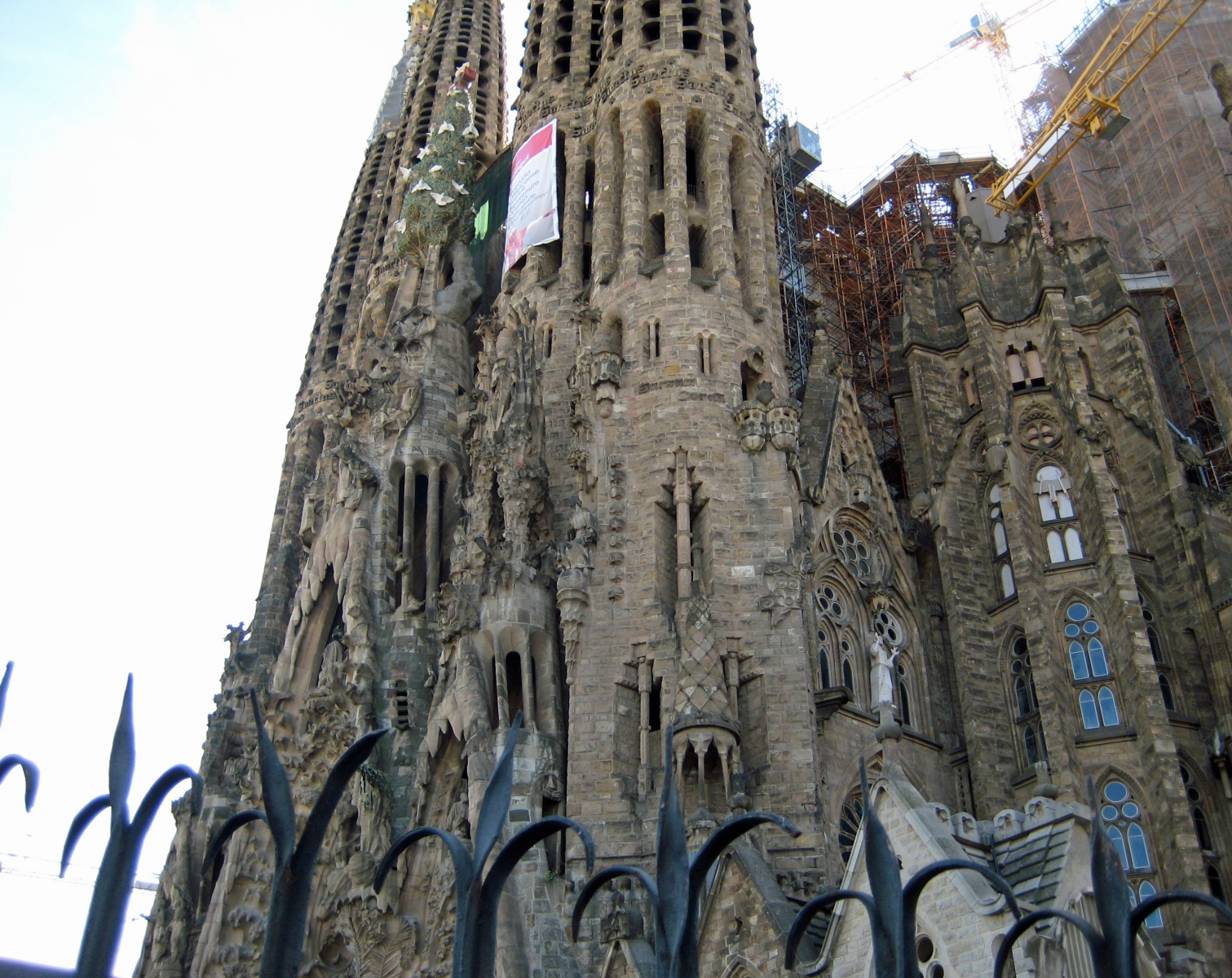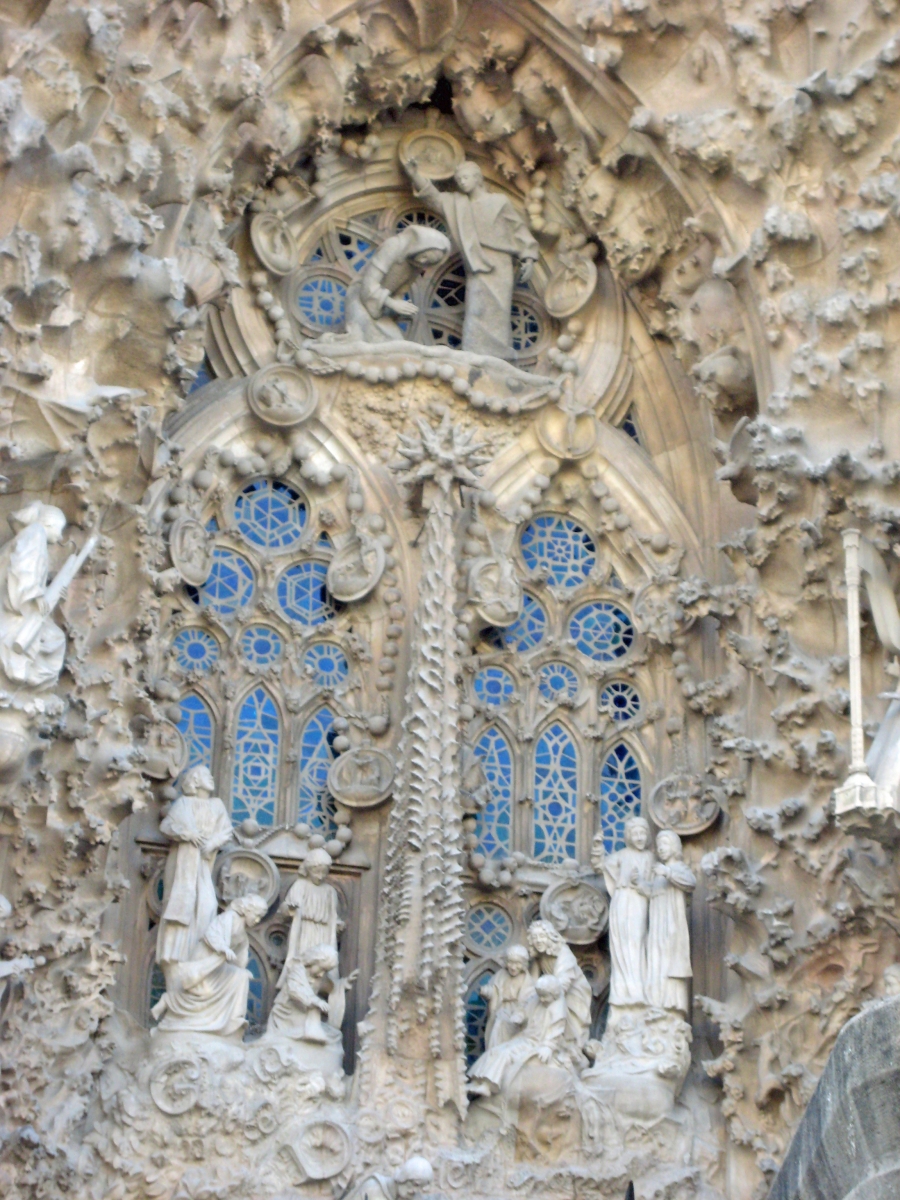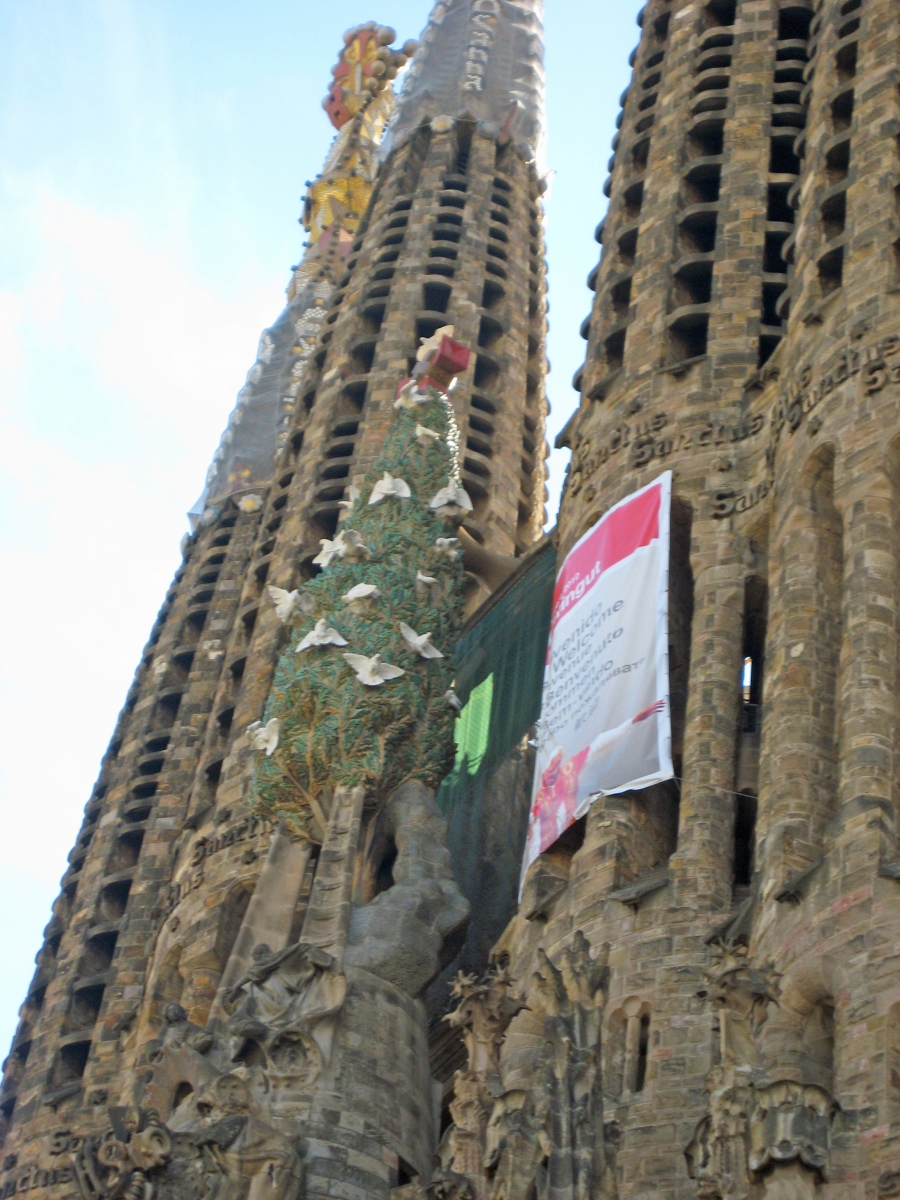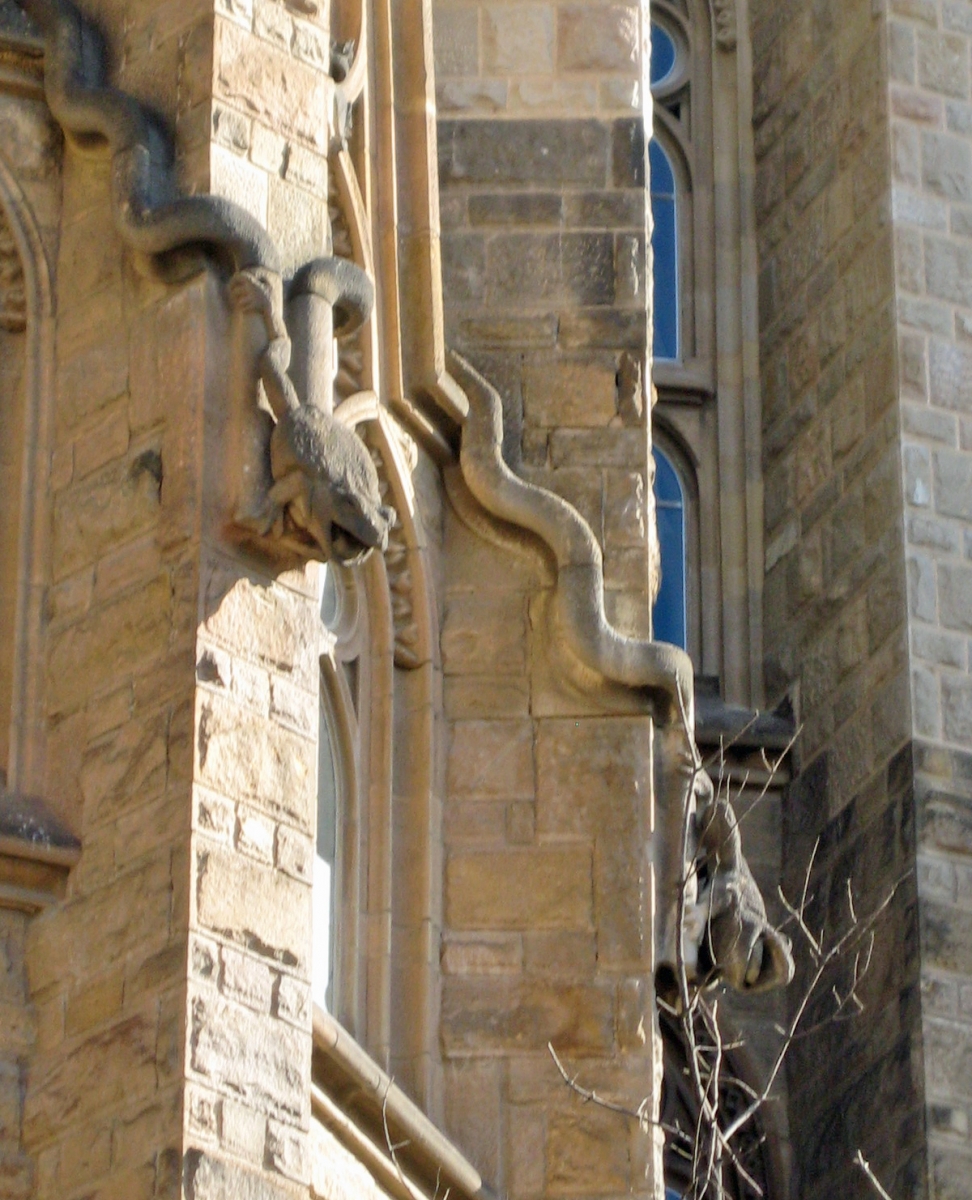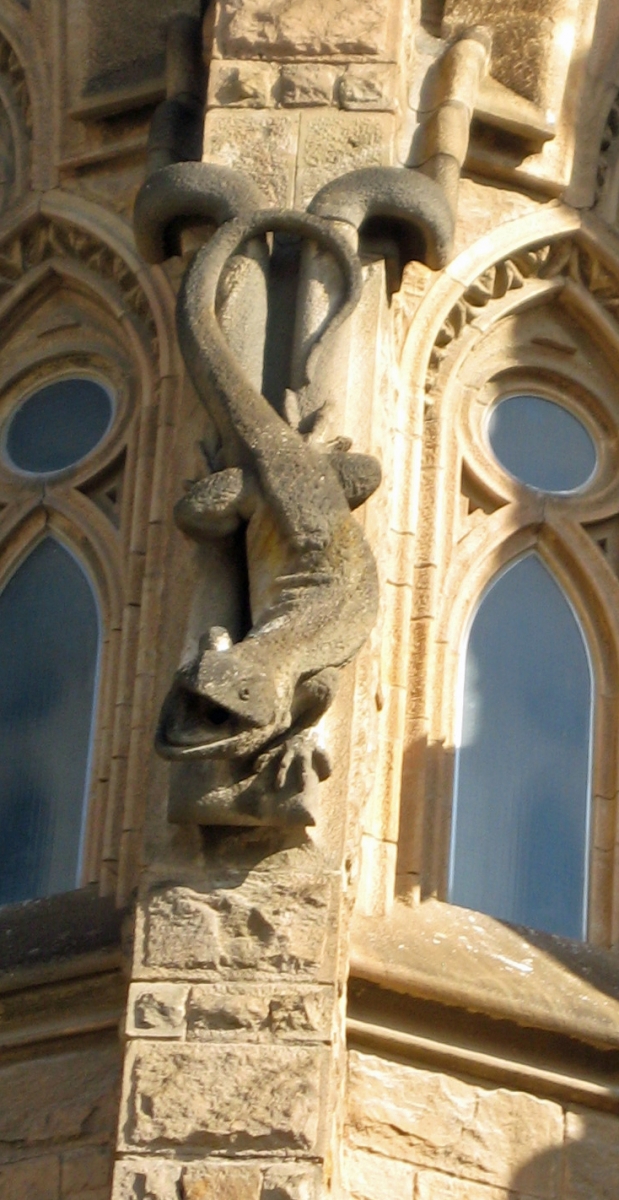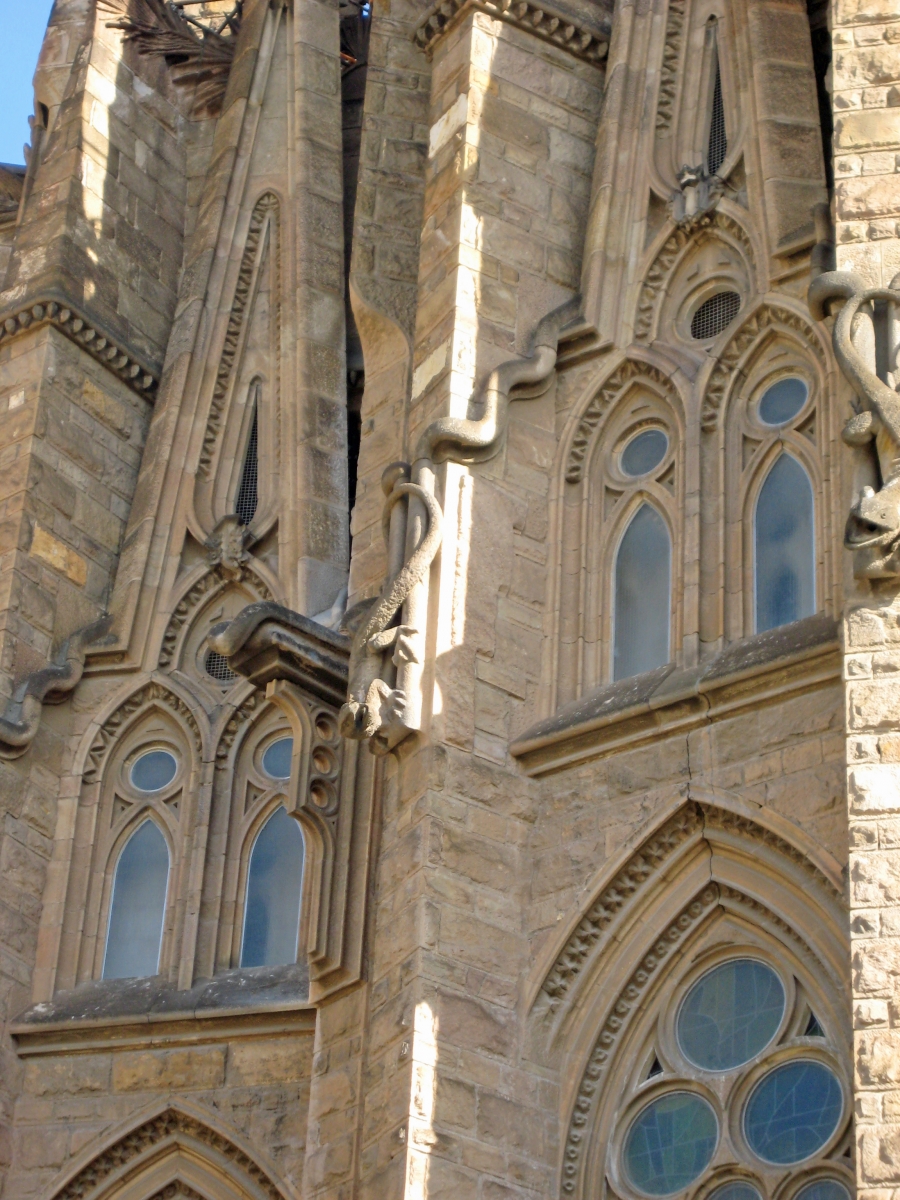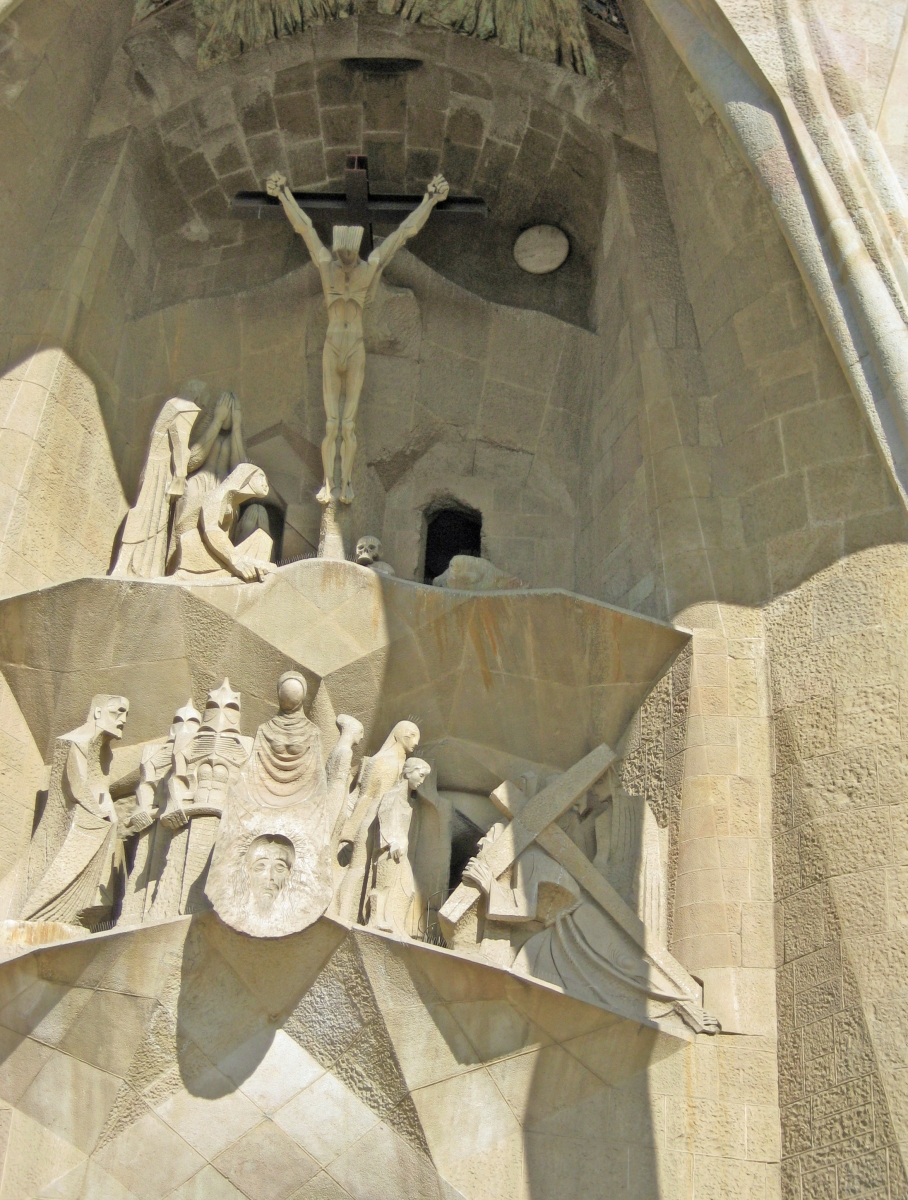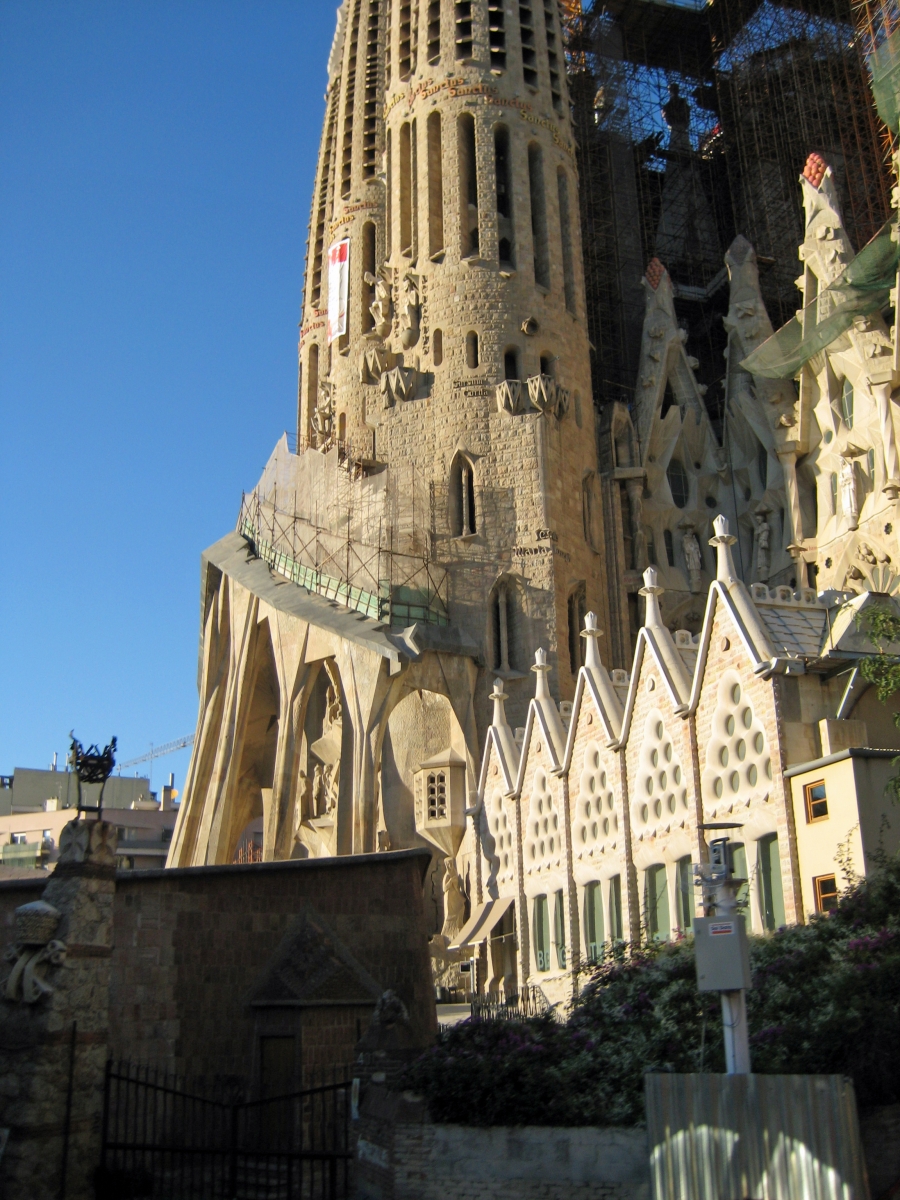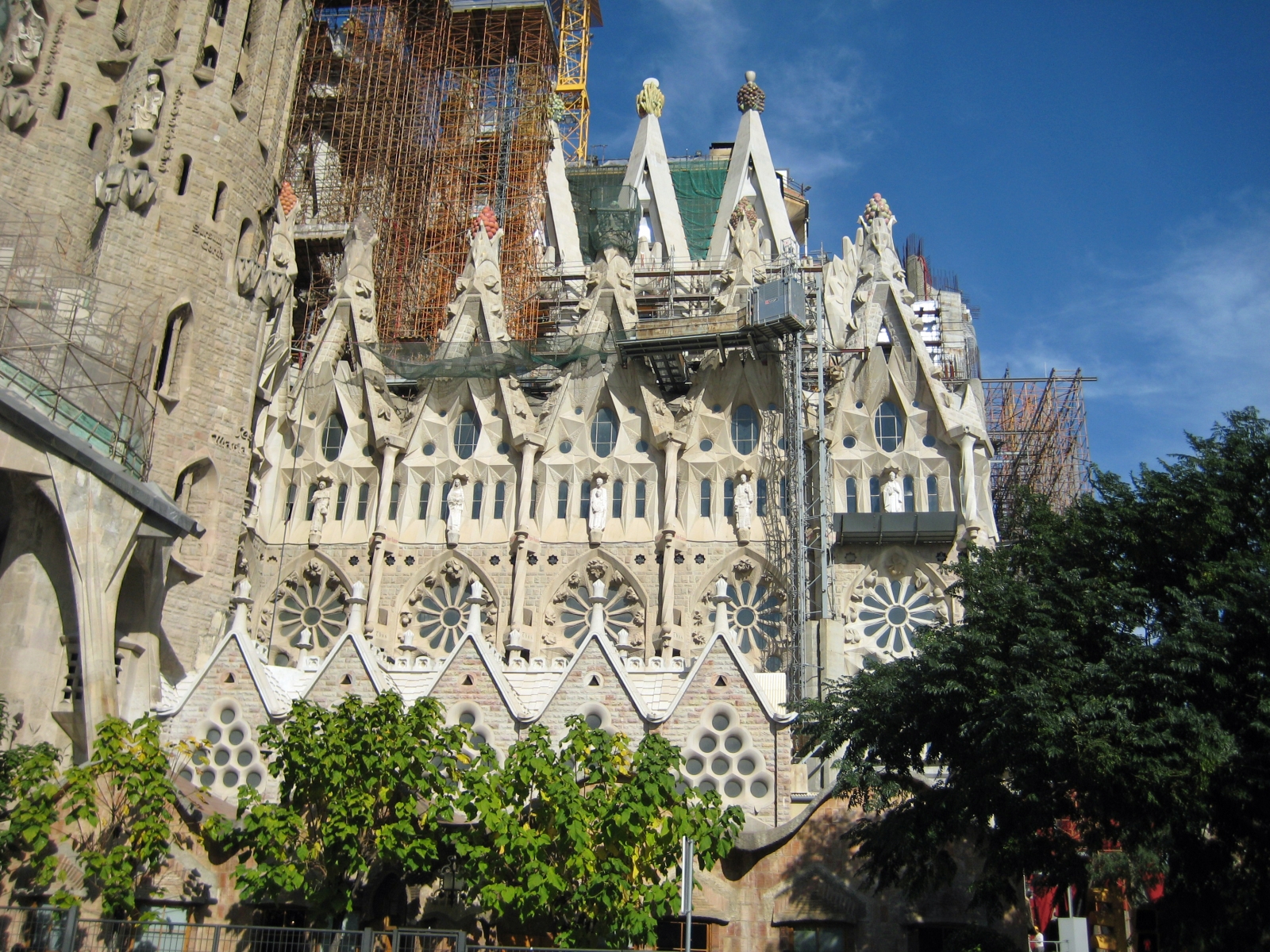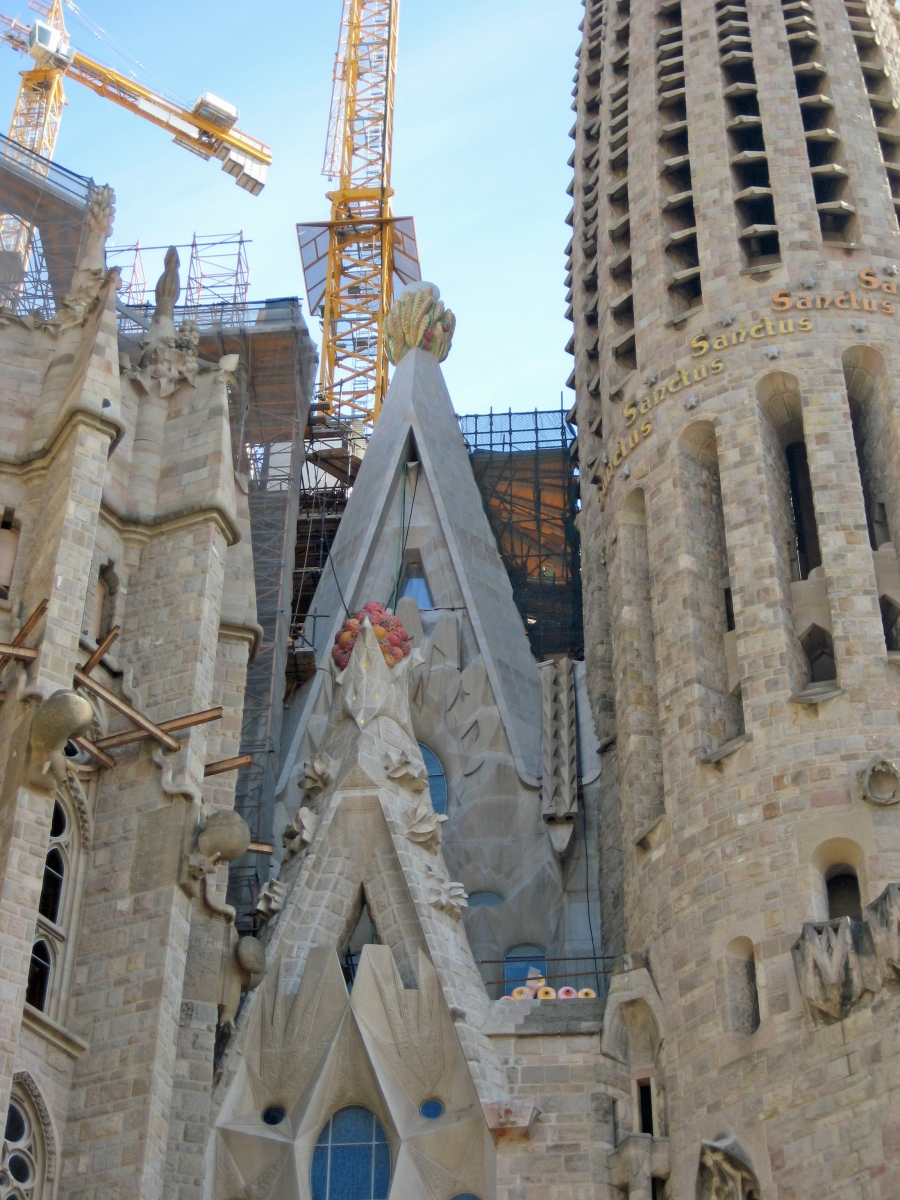In truth Antoni Gaudi's genius goes beyond the famous unfinished Basilica of La Sagrada Familia, but it is his masterpiece. It will take another trip at least to absorb and take photos of more of his truly organic work. I'll suffer for it if given the chance.
It's been two years now since we returned from our Istanbul to Barcelona cruise and I'm finally finishing up with this architectural highlight of Barcelona to be followed by a post later this week that will introduce you to some Spanish handmade shops on Etsy.
Before I get to the Basilica, I want you to see Casa Mila (better known as La Padrera or The Quarry) which was built in 1905-10. This photo is just the upper left corner of the apartment building. It curves around the street corner and is quite imposing. An interesting fact is that Gaudi wanted neighbors to get to know each other so he only put elevators on every other floor. This building was considered very innovative for its time as it was built with a steel structure and curtain walls that are self-supporting. There's also an underground parking garage. Click on the photo to enlarge it and you'll see the undulating iron balconies that seem to be alive.
Casa Mila or La Padrera
La Sagrada Familia is one of the most amazing sights and cathedrals you will ever see in your life. Its beginning starts with a bookseller named Bocabella who visited the Vatican in 1872 and returned wanting to fund a grand cathedral for his city. He wanted it to be inspired by the church at Loreto, Marche. After setting up a fund for private donations he hired architect Francisco de Paula del Villar who planned on a Gothic Revival church.
4 of what will be 12 Towers representing the 12 Apostles
The crypt was started in 1882. In 1883 Gaudi began working on it and then took over the project shortly thereafter. Gaudi completely re-did the design and worked on it the rest of his life, dying in 1926 when the church was only about 25% done at the most. He was famously quoted about the length of time it was going to take to complete by saying his client had no deadline. Since the work has been all privately funded and done all by hand through the 20th century, it's no wonder it's taken so long. When I first saw this cathedral in 2005 the talk was that there was no end date in sight. That is no longer the case. It is now projected to be complete in 2026, the centennial of Gaudi's death. The 1980's saw the introduction of computer aided design and in the current century the cement facade is being done by a CNC milling machine off-site. I was amazed to see the difference in just the five years between our visits.
There are 3 facades to the cathedral: Nativity, Passion and Glory. The first completed was the Nativity shown in the following photographs. It reminds me of a sand castle after its been in the rain for a couple of days.
Yes, this was ALL done by hand!
Kind of spooky, isn't it?!
You can see by the color of the stone where the new constructionfor the Glory Facade starts next to the Nativity Facade
The Nativity
Gorgeous, no?!
Tree of Life
Herod's Soldiers killing baby boys under the age of 2
Frogs and lizards can be seen on the sides of the buildings and are really drain spouts for the removal of rain water. This is a very gothic detail and one I would love on my home instead of the ugly metal ones!
The Passion Facade is very austere and modern looking and dedicated to the crucifixion of Christ. Cubism in statuary.
The arches like flying buttresses are to represent a skeleton of bare bones.
Transition from The Passion Facade on the left tothe Glory Facade on the right.
The final facade is the Glory Facade and is the newest. It will be the main entrance to the Basilica. It represents the road to God: death, final judgement and glory. Since Gaudi knew he would never get to it he only left a general sketch. Supposedly he intended for other architects to work on it and even to bring in other styles.
Check back later this week when I highlight my favorite Etsy artisans from Spain!

